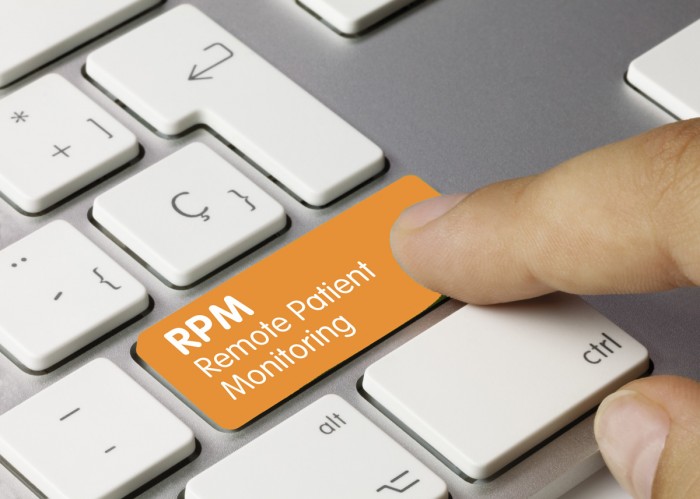57% of Medical Practices Use Remote Physiologic Monitoring
Remote physiologic monitoring is expected to increase even further, with 76 percent of medical practice leaders saying they will deploy these services in the next year or two, per a new survey.

Source: Getty Images
- A little over half (57 percent) of US medical practices currently use remote physiologic monitoring (RPM), according to new survey results.
Commissioned by Rhythm Management Group and conducted by healthcare consultancy Sage Growth Partners, the survey polled 100 physicians, administrators, and CEOs from medical practices across the country between Nov. 29, 2021, and Jan. 10, 2022.
Of the practices currently using RPM, about 67 percent manage the program in-house with their own staff members and clinicians, and about 33 percent work with a third-party partner.
RPM adoption is expected to rise, with 76 percent of survey respondents saying they will be using RPM within the next two years.
Currently, more affiliated practices offer RPM (87 percent) compared with independent practices (37 percent). But 27 percent of independent practices said they plan to launch RPM services in the next one to two years.
A majority of survey respondents said RPM improves patient satisfaction (73 percent) and staff satisfaction (64 percent). About 66 percent said it improves patient outcomes, with 43 percent of respondents overall saying it leads to fewer emergency department visits and 49 percent saying it results in fewer hospital admissions.
Further, 60 percent of medical practice physicians and leaders said RPM has a high return on investment.
But implementing and deploying RPM is not without its challenges. The staff bandwidth needed to run RPM programs is one of the top hurdles cited by survey respondents.
More than half (55 percent) said it takes three to five staff members to manage the program, and 28% said it takes six or more.
Another critical challenge is reimbursement, with nearly 60 percent saying they are receiving less than half of the total reimbursement they are eligible for as RPM users.
Only 13 percent of survey respondents said they are receiving 75 percent or more of the total potential reimbursement for RPM services.
Patient engagement is also high on the list of medical practices' RPM challenges. About 58 percent of medical practice physicians and leaders said that less than half of the patients enrolled in RPM are continuously connected and transmit regular readings. Only 7 percent said that two-thirds or more of their RPM patients are engaged in the program.
Further, survey respondents noted that not all the patients who could benefit from RPM participate in their program. Most respondents (60 percent) said that less than half of the patients that would benefit from RPM are enrolled.
Remote physiologic monitoring spiked during the COVID-19 pandemic, and research has shown that it proved helpful. One study published in 2021 showed that an automated texting program helped Philadelphia-based Penn Medicine lower the risk of death for COVID-19 patients who were quarantined at home.
Another recent study showed that at-home blood oxygen monitoring assisted in identifying clinical deterioration among COVID-19 patients.
